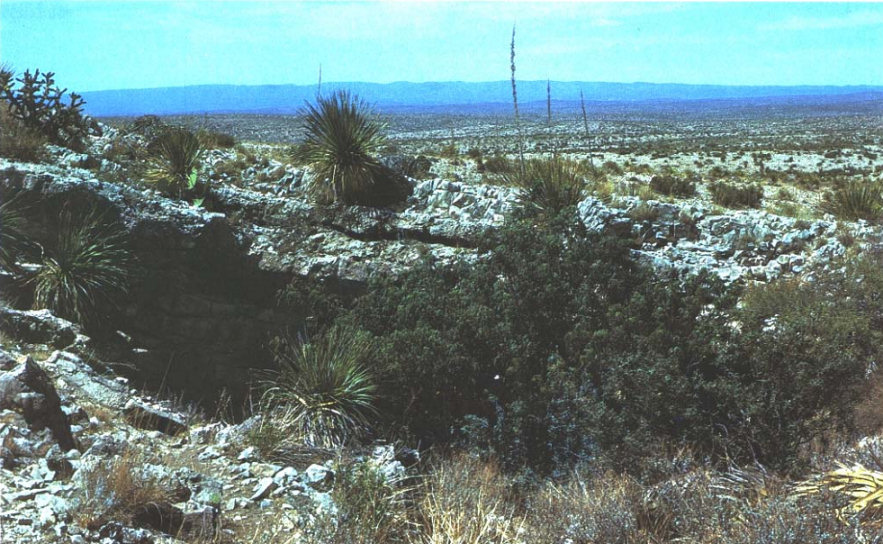
Fig. 1. Collapse feature containing the present entrance to Dry Cave. The Guadalupe Mountains can be seen in the background. Photograph by A. H. Harris.
Synonyms—Carters Cave, Dry Pot.
General Description—An overview of the Dry Cave System is given here; Locality accounts give more details. Dry Cave is a extensive, multilevel cave system formed in limestone. The present entrance probably originated when erosion uncovered the upper portion of a fissure system (the "Entrance Fissure") in the upper portion of McKittrick Hill. Subsequent erosion formed a sink-like area as material was transported into the fissure. In the same process, the roofing strata collapsed bit by bit, uncovering more of the fissure downslope as the upslope portion of the fissure partially filled and then clogged.
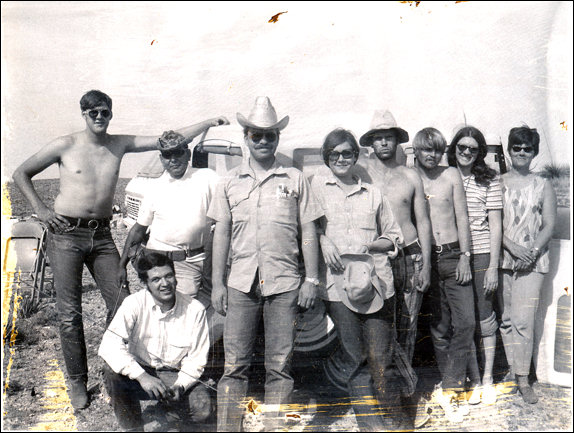
Carlsbad cave explorer R. M. Burnet (the same person Burnet Cave is named after) explored part of Dry Cave (1930s ?) and sent some bones to the U.S. National Museum. Some spikes apparently to support a grid were found in place in Camel Room (UTEP Loc. 25) in 1970 and are thought to have been placed by Burnet. In the mid 1960s, Bob Slaughter at Southern Methodist University was notified by speleologists that fossils were present in the cave; Slaughter, in turn, notified Arthur H. Harris since he knew Harris was much closer to the site. Preliminary exploration and collection of fossils began in 1965. Field schools from the now University of Texas at El Paso were held in 1970 and 1971, and collections by Harris and associates continued for several decades.
Fig. 2. Members of the 1970 field school. Kneeling, Charlie Berg. Standing, from left, Howard McDonald, Jim Elliott, Ed Wingo, Sue Brown, Bob Smartt, Rick Smartt, Patricia Hurley, and Barbara Skaggs.
Fig. 3. Looking up the Entrance Fissure toward the gated entrance. Photograph by A.H. Harris.
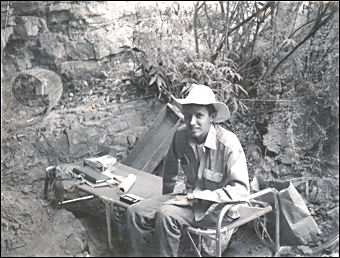
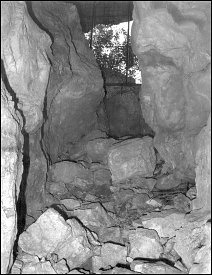 Present data, based on
the nature of the oldest known fossils from this part of the cave system, suggest that
the Entrance Fissure opened during the Mid Wisconsin, though an earlier date is not
ruled out. As the erosion and fill sequence moved southward (downslope), the age of the
fill and its included fossil fauna decreased in age, with the current Entrance Chamber
(UTEP 24) accumulating modern material at its surface.
Present data, based on
the nature of the oldest known fossils from this part of the cave system, suggest that
the Entrance Fissure opened during the Mid Wisconsin, though an earlier date is not
ruled out. As the erosion and fill sequence moved southward (downslope), the age of the
fill and its included fossil fauna decreased in age, with the current Entrance Chamber
(UTEP 24) accumulating modern material at its surface.
Fig. 4. John Applegarth, 17 June 1970, in the Entrance Sink. At the time, he was collecting herpetological specimens and ecological data for his doctoral dissertation. He later did the analysis of herpetological material from Animal Fair as part of that dissertation.
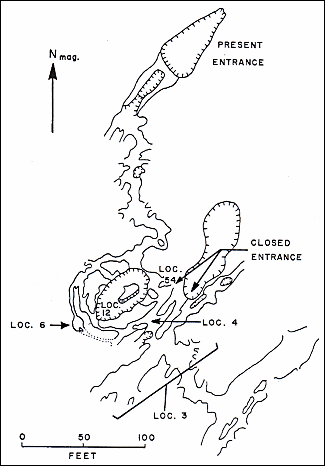 The Entrance
Fissure is intersected at several different levels by open passageways, each
characteristically forming a maze. The different levels of fill within the fissure (or
spilling out into the passageways) have faunas of somewhat different ages and have been
assigned different locality numbers and locality names.
The Entrance
Fissure is intersected at several different levels by open passageways, each
characteristically forming a maze. The different levels of fill within the fissure (or
spilling out into the passageways) have faunas of somewhat different ages and have been
assigned different locality numbers and locality names.
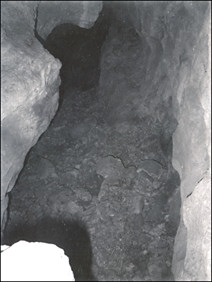
Fig. 5. Looking down into the Entrance Chamber (UTEP Loc. 24). The photograph was taken at about 180° from the position of Fig. 3. Photograph by A. H. Harris.
Fig. 6. Plan view of the Entrance Region of Dry Cave showing several of the fossil localities. Animal Fair (Loc. 22) does not appear on this rendering, but lies on the same lower level as Loc. 12 but north of the latter site's eastern end. Adapted from Harris (1970) and based on speleologists' maps.
A short distance from the present entrance, a former entrance is visible on the surface as a clogged, fissure-like sink, the "Bison Sink". Fill from this source is encountered high on the wall of a cave chamber (Balcony Room) that intersects a high passageway from the Entrance Chamber and a lower level of passageways. Excavations in this fill make up TT II, UTEP locality 54. A 14C date on bone collagen is 10,730 ± 150 (I-6200). As often is the case with bone dates, it appears to be somewhat biased to the young side. The fauna is interpreted as being terminal Pleistocene, still possessing now-extinct mammals but showing first appearances of animals more adapted to warmer conditions.
A small amount of material has been surface collected from a nearby maze that probably did not accumulate from surface-derived material, but from animals that found themselves within the cave system or may have been deposited as prey items. This makes up UTEP loc. 3.
A tight passage appears to intersect material from Bison Sink from a different direction. This is Rick's Cenote (UTEP 28) and supplied only a few faunal elements.
Material interpreted as having come from the Bison Sink source has been deposited in a passageway leading downward from the upper level of Balcony Room; these deposits form the Bison Chamber (UTEP 4) fauna. The passageway constricts with depth and becomes clogged by sediments.
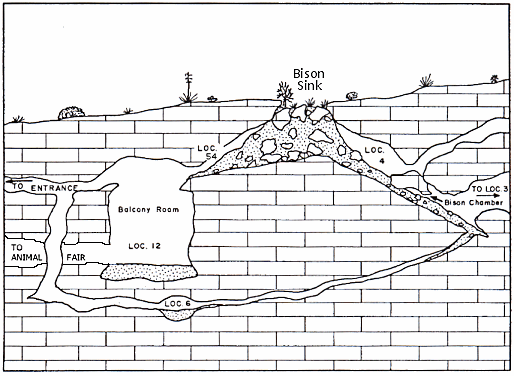
Fig. 7. Vertical relationships of fossil localities near the front of Dry Cave. Not to scale and the various sites are viewed as if they occurred in a single plane. Adapted from Harris (1970).
The floor of Balcony Room has received material flowing off of a ledge that supports the TT II sediments, probably at times also from the present Entrance Chamber, and possibly from a relatively large passageway leading north from the level of the chamber's floor. This passageway leads to Animal Fair (as in "We went to the Animal Fair, the birds and beasts were there), UTEP 22. In Animal Fair, fissure fill flows from the intersection of the Animal Fair chamber with the Entrance Fissure; an opening uncovered during excavation into the fissure itself allowed procuring of material directly from the fissure; this is Charlies Chamber, and supplied a date of 15,030 ± 210 (I-6201). It also provided evidence of a connection between this level and the level above in the form of skeletal elements apparently from the same individual (a very large horse). (Farther north in the passageway, a small pocket of fill from the fissure is encountered; this is the Pit N&W of Animal Fair (UTEP 122).)
That level above Charlies Parlor, Human Chamber (UTEP 31), was accessed by passageways from the opposite side of the fissure. The name comes from the finding of a human vertebra in the chamber; unfortunately, it appears that an earlier spelunker had picked it up and then laid it down on top of a rock that was obviously not its original home. With some flowstone on the vertebra, the element obviously had some antiquity, but there is no way of telling where it had been picked up (the only other human remains were in a blocked alcove off of the Entrance Chamber and obviously relatively recent.
Two more fossil localities intersect the Entrance Fissure. Stalag 17 (UTEP 23) is directly below the Entrance Chamber. A date of 11,800 is from within the fissure and is thought to be very close to the transition from the Pleistocene fauna to the Holocene fauna. There also appears to be an abrupt decrease in the density of faunal elements. A small chamber slightly lower and thus between Human Chamber and this site is Circus Route (UTEP 123).
Farther north, a relatively large, low-roofed chamber (Camel Room, UTEP 25) again intersects the fissure.
A passageway that passes below and west of Balcony Room leads to a smaller passage. This passageway widens slightly to form a small chamber with sediments that were rich in bone before constricting again. This is Harris' Pocket (UTEP loc. 6). A 14C date from woodrat droppings is 14,470 BP. Just beyond the wider area, the passage pinches down too small for human passage. Harris (1970a) hypothesized that this was the source of the fossil material and that the passage eventually opens into the clogged base of Bison Chamber.
Other material from Dry Cave comes from a considerable distance from the present entrance. The sources of these faunas are now clogged fissures that once intersected the surface (boulder-clogged fissures can be seen in the roof of some of the sites) These fissures are no long visible on the surface, indicative of the greater span of time that has passed since the fissures were open. Radiocarbon dates on bone carbonates fall within the mid Wisconsin, but it is suggested that the faunas may be early Wisconsin or conceivably even earlier. These sites include UTEP 1 (Above Lost Valley) and UTEP 17 (Lost Valley). These faunas have now been merged as the source is the same and no appreciable age difference is apparent. Room of the Vanishing Floor (so named when spelunkers sank to their thighs in bat guano) is UTEP 26. UTEP Locality 2 (Balcony on Lost Valley) opens at an intermediate level between UTEP 17 and UTEP 1, but apparently did not receive material from the same source; it connects downslope with UTEP 5 (Sabertooth Camel Maze).
Obtaining material from these sites deep within the cave system was a problem. Only limited sizes of containers were usable because of tight passageways and the necessity to chimney between levels at one place. Thus most material was picked from matrix at the sites, though small amounts of matrix were recovered.
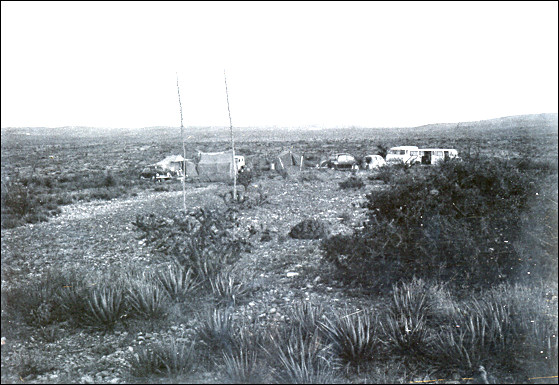
Fig. 8. The 1970 field camp illustrating the general nature of the present landscape and vegetation. Photograph by A. H. Harris.
Last Update: 7 Feb 2011